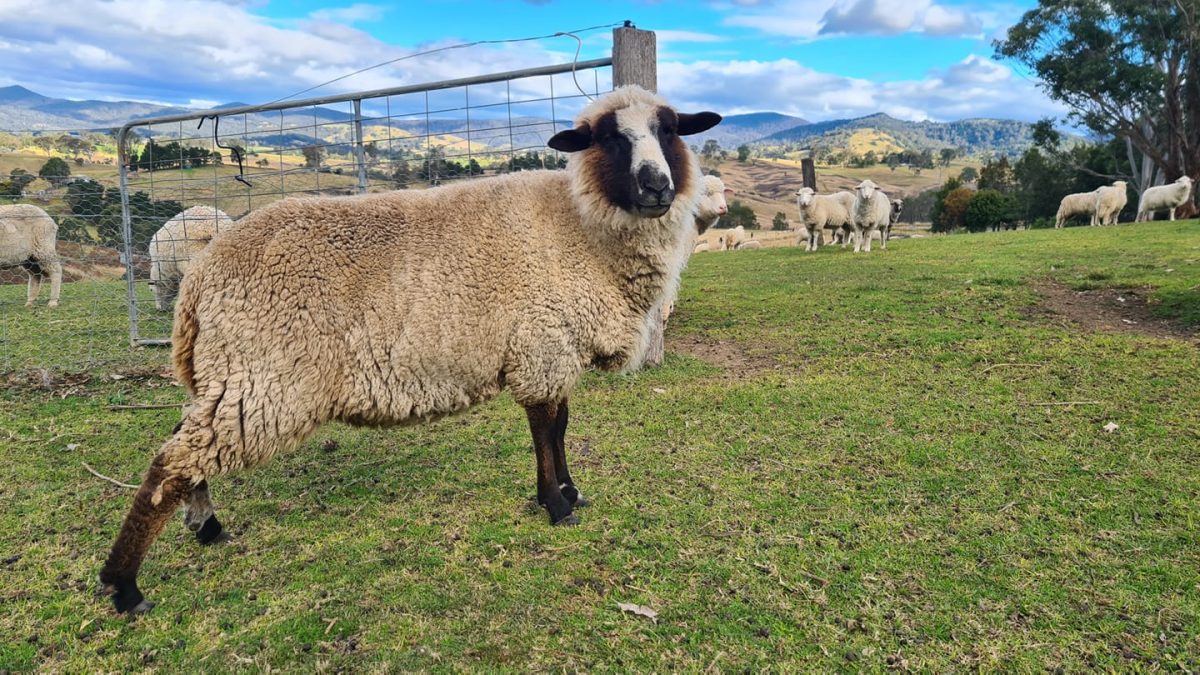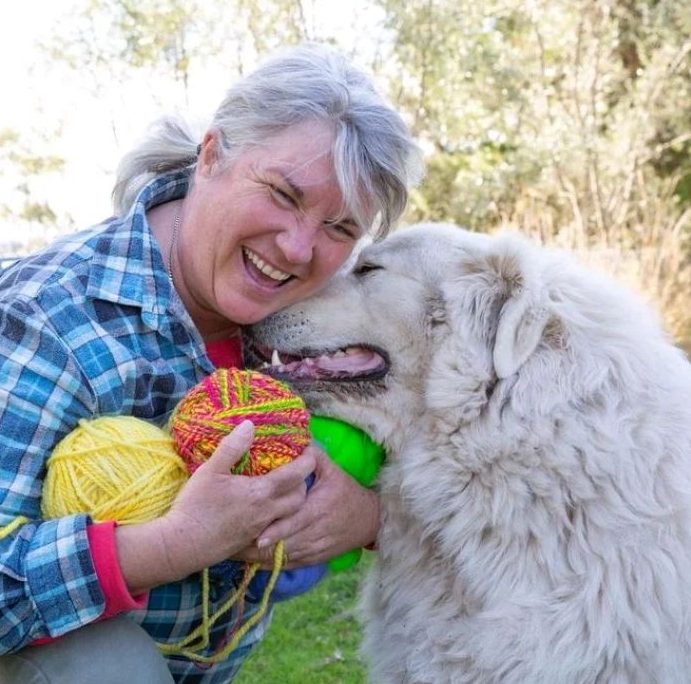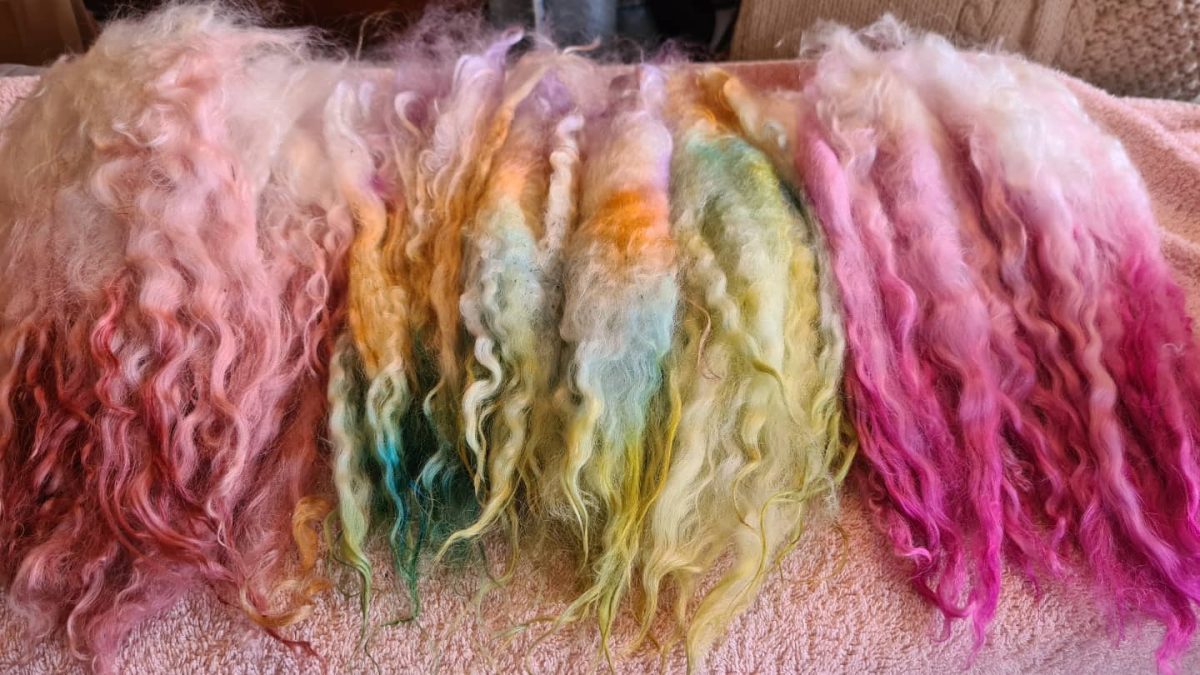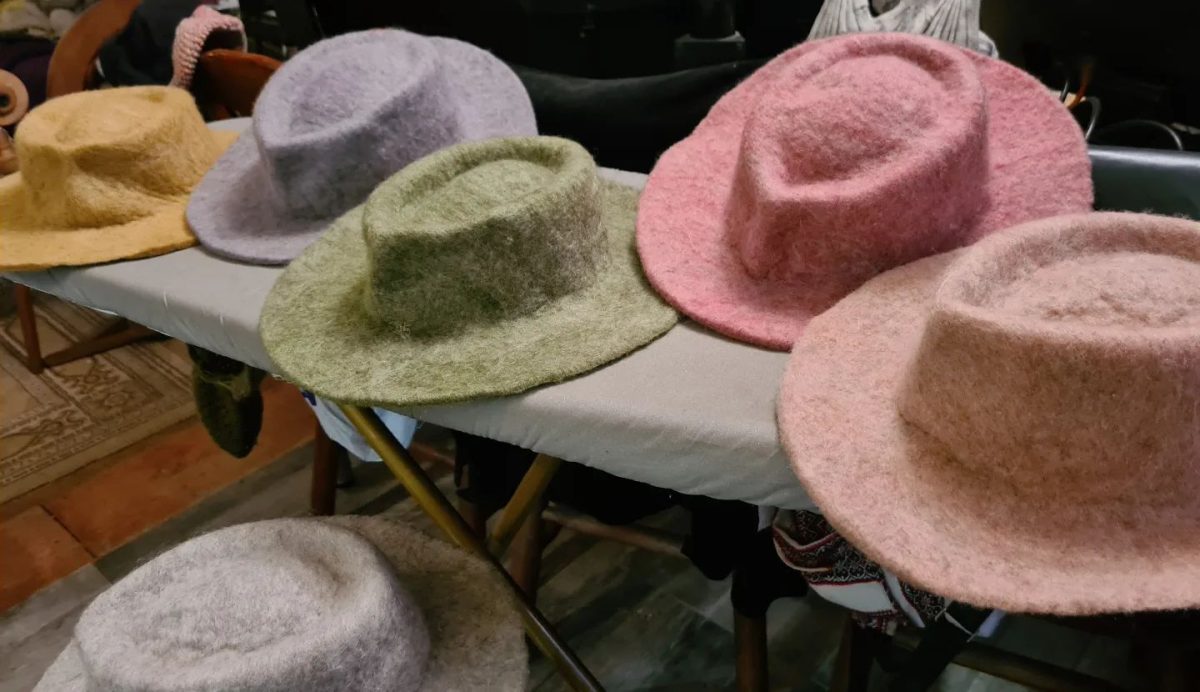
‘Derek’, from the Tabandy Farm in the Bega Valley. Photo: Tabandy Farm, Facebook.
It’s one of life’s great questions, not far behind ‘what does it all mean?’ and ‘when lightning strikes the sea, why don’t all the fish die?’.
We’re all told to never put wool in the washing machine because you’ll be left with a drab sack about the size of a thumbtack. And yet somehow, when the wool is still on the sheep, out in the elements all day, every day, it’s fine. Why?
Tabitha Bilaniwskyj-Zarims looks after a flock of more than 70 sheep of various breeds on Tabandy Farm near Candelo, in the Bega Valley. Many of them are rescue sheep, from people who bought a handful of pets and then realised it was too much work for not enough gain.
“I’ve always been a spinner – spun wool – and have had sheep around my whole life, and this flock just grew from about six to more than 70,” she says.
They’re a mix of breeds as a result, but most are Australian Finns, a variation on a breed native to Finland and often used in crossbreeding programs to increase the percentage of lambs.
“It’s fine and silky wool, a bit like hair,” Tabitha says.
“And the sheep are gorgeous too – they’re small and clean legged, with a really tiny triangular tail.”
Every two years, Tabitha sends between 350 and 400 kg of wool off for processing in Victoria, where all the gunk is removed and it comes back clean and combed. She dyes and then either makes it into scarfs or hats or toys to sell online or through her shop in Bega.

Tabitha Bilaniwskyj-Zarims teaches textile classes at schools across NSW using her wool. Photo: Tabandy Farm, Facebook.
Key to the process is ‘felting’, which she also teaches in textile programs across several NSW high schools.
Like Velcro, a strand of wool is coated in tiny barbs or hooks, which, when interconnected, make a dense and flat fabric for all kinds of uses. There are broadly two ways of making this happen: one, with special felting needles, or two, with hot water, soap and rubbing.
“You can wash wool no dramas. I boil wool and it doesn’t felt. You’ve got to have heat, friction and soap to felt.”
A washing machine has all three – hence why all the fibres have closed together on your jumper and it’s now three sizes too small.

Wool samples, after a combing and dying process. Photo: Tabandy Farm, Facebook.
This trait does, in fact, affect the wool on sheep too, and when it does it’s called a ‘rise’. But because a rise means the wool then can’t be processed properly and is useless, the trait has largely been bred out. Except in the case of the Finns, it seems.
“When they get wet and they’re walking, it creates a friction between the skin and the base of the wool, and when you shear those sheep, it comes off like a rug, and that’s literally felt.”
Very occasionally, a “machine washable sheep” can come through the bloodline of other breeds too.
“You might get this random one sheep that produces a wool that doesn’t felt and you’ll sit there and try to felt it all day and go: ‘What the bloody hell? This is just not doing anything.’ But that’s because the wool is already felted, and once wool is bound like that, you can’t undo it.”
Tabitha will be giving Canberrans the chance to try their hand at both needle and wet felting during two workshops at this weekend’s Canberra Wool Expo ,”so people can make something they can wear this winter”.
Held annually at the Old Bus Depot Markets in Kingston, the two-day Canberra Wool Expo highlights the “rich and thriving wool” industry in the Canberra region.
“Canberra Wool Expo aims to shine a light on an industry that has always been part of the Australian history and farming culture, but is perhaps not as heavily as promoted as it deserves,” Old Bus Depot Markets manager Richard Vagi says.

Just some of the wares Tabitha makes. Photo: Tabandy Farm, Facebook.
“It gives the makers a chance to head to the ‘big smoke’ and showcase their wares, while providing Canberrans with a chance to meet some real wool producers, discover the variety of things that people can create with wool, and buy their woollen creations in time for the cooler winter weather.”
There’ll also be handweaving and spinning demonstrations, and encounters with alpacas and black-nosed Valais sheep for the kids.
And yes, answers to life’s big questions too.
The Canberra Wool Expo will be held at the Old Bus Depot Markets from Saturday, 18 May, to Sunday, 19 May, 9:30 am to 2:30 pm. Entry is free. Visit the Old Bus Depot Markets website to book tickets to the Felting Workshops.













